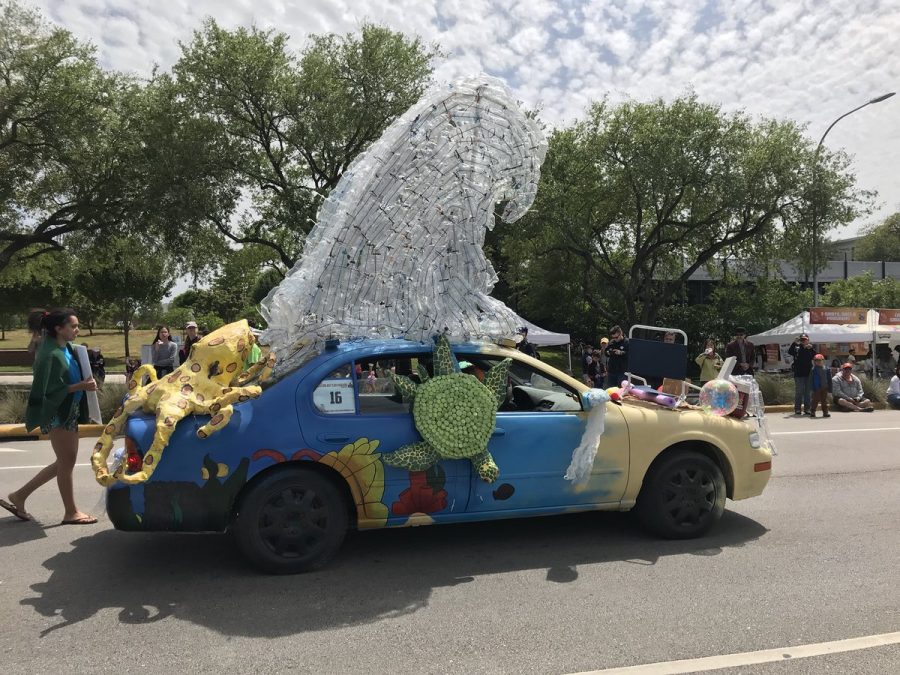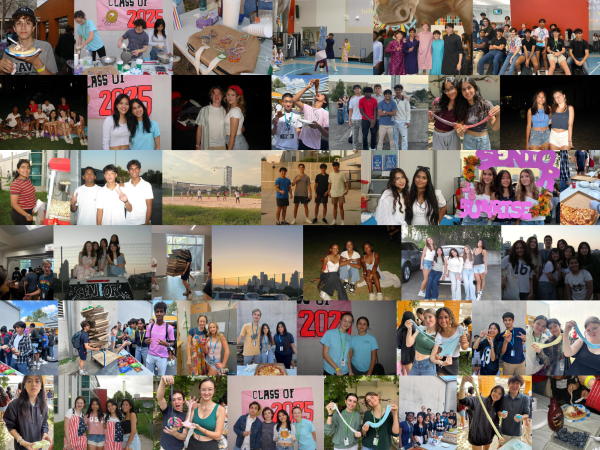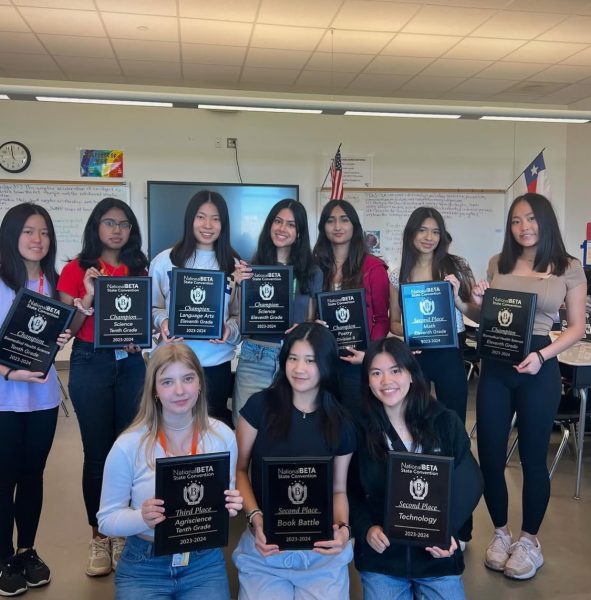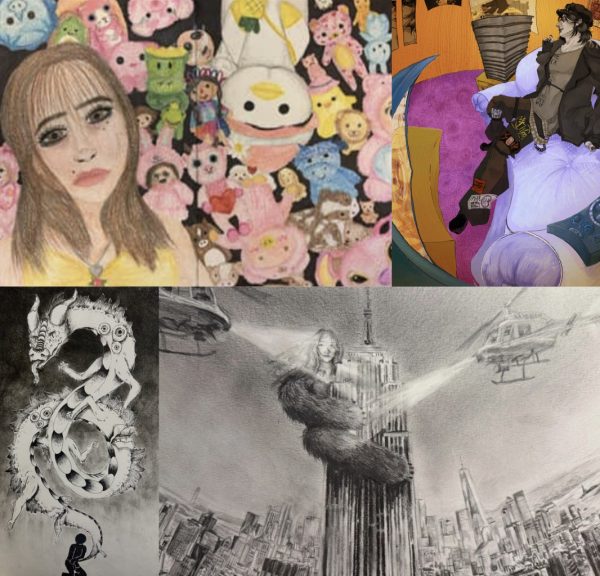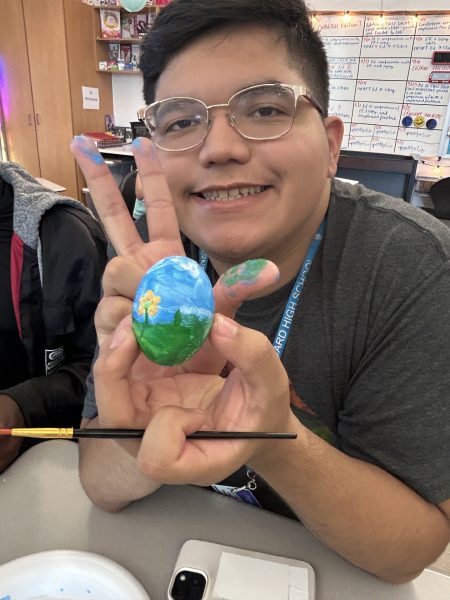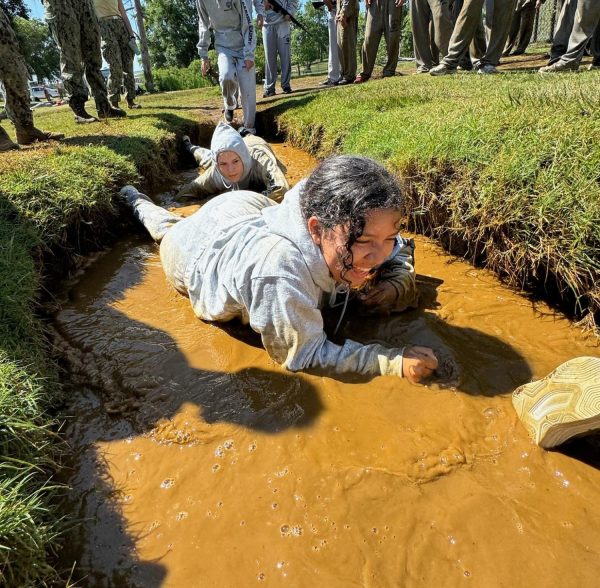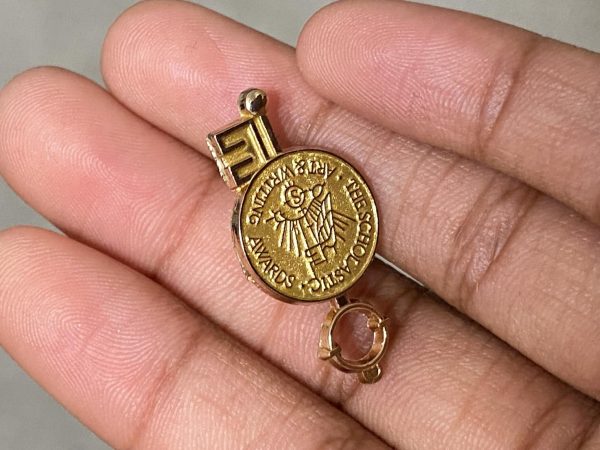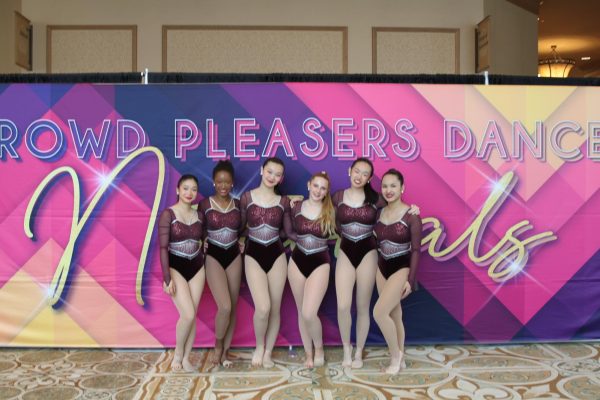Carnegie’s Wildlife Projects: A Creativity Showcase
Carnegie’s most recent art car
When a student is in their senior year, they are understandably stressed, because they are realizing that there is a huge change coming up in their lives. So it makes sense that they would gravitate to classes that they would enjoy, like Ms. Ford’s Wildlife Class. And part of that class is the upcoming Wildlife Projects that those students create to better the environment, which is a noble feat that everyone should aspire to.
This project counts for roughly 70% of the student’s grades.
“It is almost entirely student-led. Students select their project at the start of the year and then must become project managers as well as implement and maintain their project,” Ms. Ford says.
The project counts for roughly 70% of their grade and is made up of 6 components: Art Car, Marketing/Media, Garden Beds/Courtyard, Front Beds (near the garage), Sky Prairie/Green Roof, and Lizards/Turtles. These projects are also done in partnership with conservation agencies, including the Houston Zoo and Katy Prairie Conservancy.
In the past, many of these projects have made huge impacts on the environment. For example, in 2018 Carnegie partnered with the Student Conservation Association to appeal for a grant in order to reduce plastic waste in the school, as well as education about water conservation for students. And in 2019, they accomplished their second art car, Rhinos for Monarchs.
And while the project itself is plenty rewarding, it also comes with benefits.
Ms. Ford says “This course absolutely helps with college applications as it provides students an example of work they have designed and completed on their own as well as time management, communication skills, teamwork, and overcoming challenges.”
While this can relieve some of the stress about college applications, don’t assume that this project is just an easy A.
As it was explained, “each project has its own set of goals and requirements so there’s no one set of criteria. Each team is required to provide a set of files or documents that include SMART Goals, a project timeline, data on their work, photos of progression, and orders for supplies. Ultimately, each team must complete the goals they have set out for themselves or be able to reasonably explain why the goals were not met….It’s not easy to design and plant an area that not only looks purposeful but is also beneficial to native wildlife and migrating birds and monarch butterflies.”
This project seems to be the perfect project. Not only does it strengthen college applications, it exercises a student’s creativity and group communication skills. And what cause could be nobler than enriching our planet for the generations that will come next?
Your donation will support the student journalists of Carnegie Vanguard High School. Your contribution will allow us to cover our annual website hosting costs and fund field trips, competition fees, and equipment. We appreciate your support!

I'm a sophomore who loves Disney Movies and baking (as well as eating everything I make.)
Instagram: @shaun_renee
Twitter: @shaun_wood2022

